
about me
Anyone who knows me is aware that I am a bit of a movie buff. Over the past few years I have been building an autograph collection of my favourite actors’ signed photographs. Since I like movies so much there are many actors whose work I enjoy. I have collected the photographs from the actors themselves, through contacts in the studios and through auctions. I now have over 2,000 photographs in the collection.
My Autograph Collection
I have separated my autograph collection into different categories, which you can see below. Feel free to browse whichever section interests you. Inside, I share not only the autographed photo in my possession, but also information about the actor, including their biography, photos and posters of their movies, and sometimes videos dedicated to them.
Whether you’re drawn to classic Hollywood icons, contemporary superstars, or character actors with a cult following, there’s something in my autograph collection for every movie enthusiast. If you enjoy my blog, don’t hesitate to leave a comment on one of my entries.
Actors Autograph Collections
Blog Categories
BRITISH ACTORS
Collection of Classic Brittish Actors
IRISH ACTORS
Collection of Classic Irish Actors
HOLLYWOOD ACTORS
Collection of Classic Hollywood Actors
EUROPEAN ACTORS
Collection of Classic European Actors
CONTEMPORARY ACTORS
Collection of Classic Contemporary Actors
RECENT POSTS
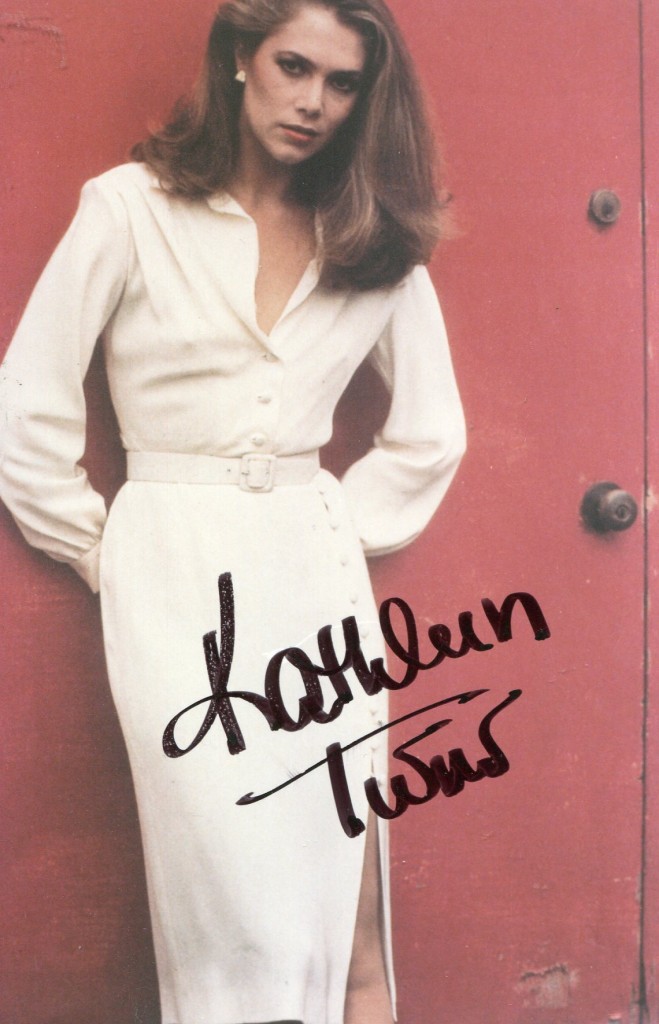
If you love 1980’s movies, you have to love Kathleen Turner. She was terrific in “Body Heat”. I love when she says to William Hurt in her husky voice “Your somewhat dim, I like that in a man”. She was excellent too in “Peggy Sue Got Married”, “Romancing the Stone” and “”Prizzi’s Honour”.
TCM overview:
A leading lady of 1980s cinema, Kathleen Turner earned comparisons to 1940s femme fatales like Barbara Stanwyck for sensuous, aggressive roles in “Body Heat” (1981), “Prizzi’s Honor” (1985) and “The War of the Roses” (1989). When the smoky-voiced actress was not manipulating male characters with her on-screen sultry ways, she proved to be quite a comedienne, as well, volleying quips with Michael Douglas in the jungle adventure film “Romancing the Stone” (1984) and inhabiting an 18-year-old body in “Peggy Sue Got Married” (1986). She received a diagnosis of rheumatoid arthritis in the early 1990s, and that – along with the pained actress’ heavy drinking and over-40 status – meant her screen appearances were reduced to character roles as moms and comic villains – something she still pulled off with panache. After acclaimed theatrical runs in “The Graduate” and “Who’s Afraid of Virginia Woolf” on the New York and London stages, the fiery actress regained her esteemed reputation and settled into a comfortable real-life role as a supporting film player, theater director and acting teacher.
A globe-trotter from birth, Kathleen Turner was born June 19, 1954; the child of a foreign service diplomat father. Turner lived in Cuba and Venezuela, among other places, and began to take an interest in acting while living in London and seeing top British performers on the West End stage. She studied at London’s Central School of Speech and Drama, in addition to classwork at American High School, and when the multi-lingual teen returned to the States, she went on to earn a Theater degree from the University of Maryland. She moved to New York City to pursue an acting career and landed an agent within a month of her 1977 arrival. Work off-Broadway led to her role as social-climbing Nola Dancy Aldrich on the NBC daytime drama “The Doctors” (NBC, 1963-1982). She also debuted on Broadway in “Gemini” in 1978. In 1981, she experienced overnight stardom with her feature debut as the cunning temptress who cons lawyer William Hurt into murdering her wealthy husband in “Body Heat” (1981), a contemporary film noir from Lawrence Kasdan. For her unforgettable performance, critics likened her to Golden Era greats like Stanwyck, Lauren Bacall and Ava Gardner. Proud of the comparisons, Turner capitalized on her femme fatale reputation in sensuous, aggressive roles like Steve Martin’s gold-digging wife in Carl Reiner’s “The Man with Two Brains” (1982), a businesswoman-turned-prostitute in Ken Russell’s “Crimes of Passion” (1984), and the cold-hearted hit-woman in John Huston’s Mafia comedy, “Prizzi’s Honor” (1985).
Turner also proved a likable comedienne in the popular old-fashioned adventure “Romancing the Stone” (1984), in which Turner was cast in the more sympathetic role of a romance novelist who can not find love, only to meet Michael Douglas’ professional adventurer who sweeps her off her feet. The box office success triggered the 1985 sequel “Jewel of the Nile,” but it took a $25 million lawsuit on the part of the studio to make Turner honor her contract for what she perceived was a vastly inferior script compared with the original. In 1986, Turner starred in Francis Ford Coppola’s “Peggy Sue Got Married” (1986) and earned a Best Actress Oscar nomination for her tour de force performance as a mature woman inhabiting the body of her teenage self. Absolutely believable as a 42-year-old in a 17-year-old body (she was 32 at the time), she captured youthful insouciance through her altered speech and body movements and was the best thing about the sentimental picture. After the psychological thriller “Julia and Julia” (1987) cast her as a woman caught between a happily married existence with Gabriel Byrne and a dangerous affair with Sting, Turner teamed up with Douglas again in Danny De Vito’s darkly comic study of marital breakdown, “The War of the Roses” (1989).
Perfectly cast to voice sexy cartoon character Jessica Rabbit in the ‘toon noir “Who Framed Roger Rabbit” (1988), Turner scored a second time that year when she reteamed with Hurt and Kasdan for “The Accidental Tourist,” playing Hurt’s emotionally distant spouse. Though Geena Davis stole the show and took home a Best Supporting Actress Oscar as the new love interest for Hurt, Turner gave a compelling and sympathetic portrayal of a woman deeply scarred by the death of her 12-year-old son. Turner turned in a much-applauded and Tony-nominated portrayal of Maggie in a Broadway revival of Tennessee Williams’ “Cat on a Hot Tin Roof” in 1990, but the new decade did not bode well for the maturing actress’ box office clout. The detective film “V.I. Warshawski” (1991), the small-scale medical drama “House of Cards” (1993), and the “Thin Man” wannabe “Undercover Blues” (1993) all failed with critics and the public. Filmmaker John Waters, with his knack for sending up actors’ established personas, gave Turner a break from the forgettable with “Serial Mom” (1994), in which she played a modern-day homemaker with the looks of June Cleaver and the heart of Charles Manson. Turner at once frightened and delighted audiences, but nothing she did seemed to fully re-ignite her feature career, which began to suffer in part by a diagnosis of arthritis and the actress’ increasing dependence on alcohol to manage the pain.
Both conditions made Turner less desirable to cast, and she turned to the small screen. Her experience at the helm of “Leslie’s Folly” (1994), part of Showtime’s “Directed By” series, did not earn her subsequent directorial work, and she produced and starred in her network TV-movie debut, “Friends at Last” (CBS, 1995), showing that she was more than willing to be unglamorous in her new life as a character actress. This was never more obvious than taking the role of Chandler Bing’s (Matthew Perry) drag queen father in a number of episodes of the popular sitcom, “Friends” (NBC, 1994-2004). With her unmistakably sophisticated voice, she also became a frequent narrator and host of TV documentaries. One of the 1980s leading actresses was now relegated to supporting roles and comic villains on the big screen throughout the 1990s, with appearances as the stepmother in “Moonlight and Valentino” (1995), the wicked fairy in 1997’s “A Simple Wish,” and a nefarious scientist obsessing over “Baby Geniuses” (1999).
Turner returned to the stage, insisting that the best women’s roles could be found there. She portrayed an incestuous mother in Jean Cocteau’s “Indiscretions” on Broadway and later ventured to London to act in “Our Betters” and perform a one-woman show about silent film actress Tallulah Bankhead – someone whose throaty voice was reminiscent of her own. After appearing as a TV anchorwoman in TNT’s satirical “Legalese” (1998), Turner was excellent in her understated turn as the rigid, dowdy mother of five in Sophia Coppola’s feature directing debut, “The Virgin Suicides” (2000).
She returned to the British stage as famed elder seductress Mrs. Robinson in a theatrical adaptation of “The Graduate” (2000), and after reprising the role in a 2002 run on Broadway, the 48-year-old actress checked into a rehab facility for alcohol treatment. A commitment to sobriety plus new developments in arthritis medication that significantly eased the actress’ constant pain facilitated Turner’s return to Broadway in 2005, where she was cast in one of the most demanding roles in American theater, Martha in Edward Albee’s “Who’s Afraid of Virginia Woolf?” She was nominated for a Tony Award for her electric performance and followed the production to London, where she again wowed audiences and critics. Turner maintained her strong standing, lending her voice to the animated film “Monster House” (2006) and debuting as a theatrical director with the off-Broadway production of “Crimes of the Heart.” She was tapped by New York University to teach acting and released the memoir Send Yourself Roses, which offered some insight into her career, her history of alcoholism, and her struggles with arthritis. In 2008, Turner was well-cast to play a drill instructor-like dog trainer in the film adaptation of John Grogan’s bestseller about a rambunctious dog and the family who loves him in “Marley & Me.”
The above TCM overview can also be accessed online here.
- Liam
- No Comments

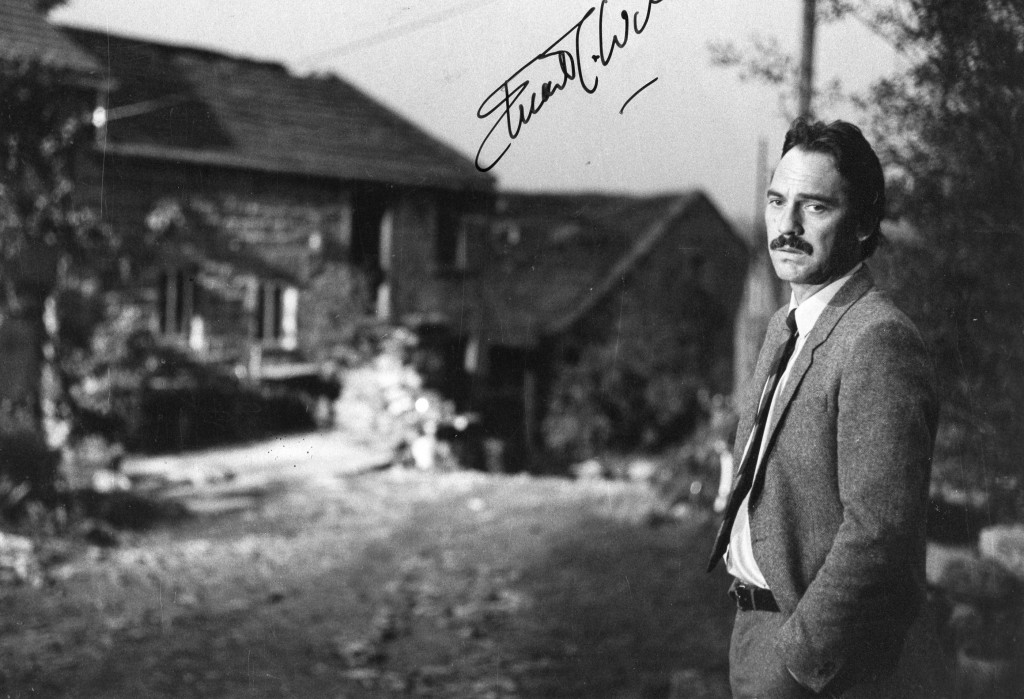
Stuart Wilson was born in Guilford, Surrey in 1946. He made his film debut with a major role in “Dulcima” with John Mills and Carol White in 1971. Other movies include “Wetherby” and in Hollywood “Lethal Weapon 3”, “The Age of Innocence” and “he Mask of Zorro”.
TCM overview:
A handsome, dark-haired, often mustachioed, actor, Stuart Wilson became more familiar to American moviegoers as the corrupt cop in “Lethal Weapon 3” (1992). Discerning TV viewers might remember the performer from a string of prestige British shows, many of which aired in the USA on PBS. The stage-trained Wilson has a prominent supporting role in “The Pallisers” (1977) and cut a dashing figure as Vronsky to Nicola Pagett’s “Anna Karenina” (1978). In the syndicated “Running Blind” (1981), he was cast an undercover British agent while in the multi-part “The Jewel in the Crown” (1984), he played a British army major. After a turn as a policeman investigating a murder in David Hare’s superb “Wetherby” (1985), Wilson was cast as a titled Hungarian with mixed feelings about the treatment of Jews under the Nazis in the NBC miniseries “Wallenberg: A Hero’s Story” (also 1985).
Once his profile in American films was enhanced with his villainous turn in “Lethal Weapon 3”, Wilson found more or less steady work in the States for a couple of years. He offered another villain, this time a gun-running mercenary, in “Teenage Mutant Ninja Turtles III”, then turned more genteel but retaining an air of mystery as a suitor to the Countess (Michelle Pfeiffer) in “The Age of Innocence” (both 1993). The following year, the actor was tapped to play the leader of an anarchic band of rebels in the muddled sci-fi actioner “No Escape”, cast as a diamond smuggler who seeks refuge in a sex retreat in the uneven comedy “Exit to Eden” and portrayed Sigourney Weaver’s husband in Roman Polanski’s film version of Ariel Dorfman’s play “Death and the Maiden”. Wilson went on play Helen Mirren’s lover in two installments of “Prime Suspect” in 1995 and 1996 before etching another nefarious character, the Spanish governor, in “The Mark of Zorro” (1998), opposite Antonio Banderas and Anthony Hopkins
The above TCM overview can also be accessed online here.
- Liam
- One Comment
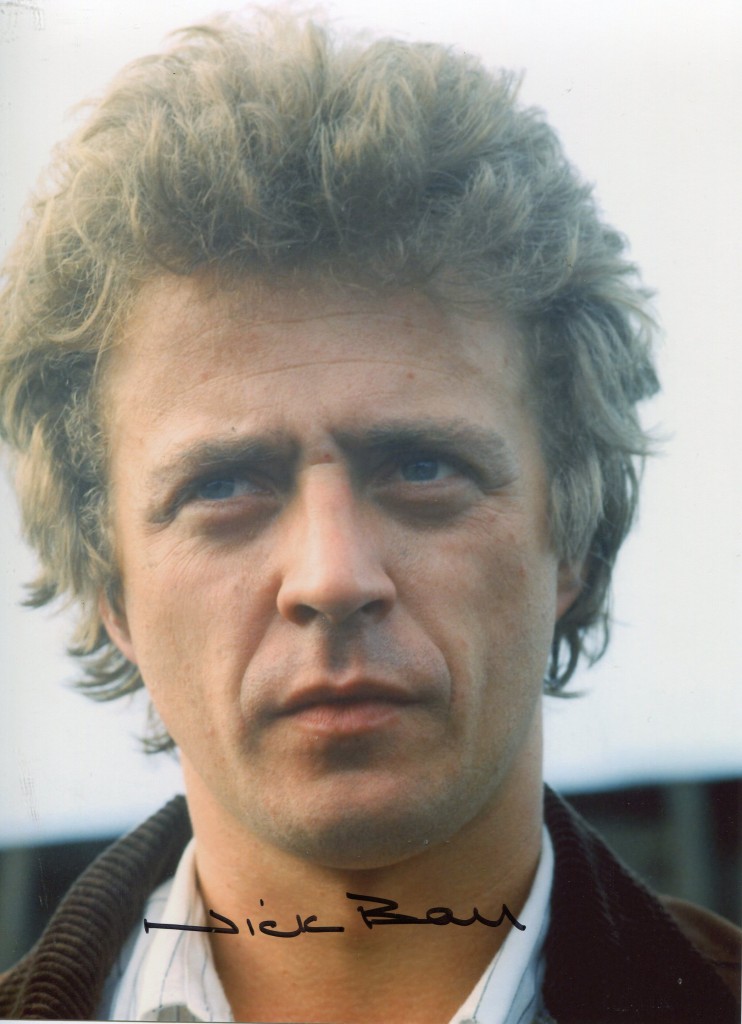
Nicholas Ball was born in 1946 in Royal Lemington Spa. He is best known for his iconic performance in the classic British TV series of the late 1970’s “Hazell”. He has also starred in “Eastenders” and “Footballer’s Wives”. “Red Dwarf” interview here.
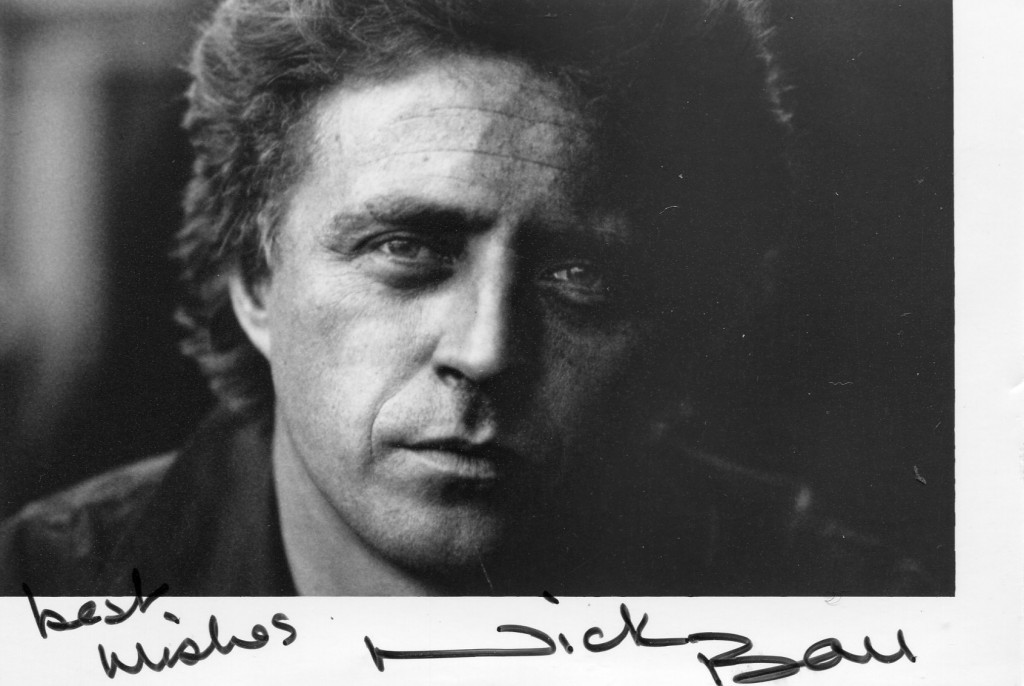
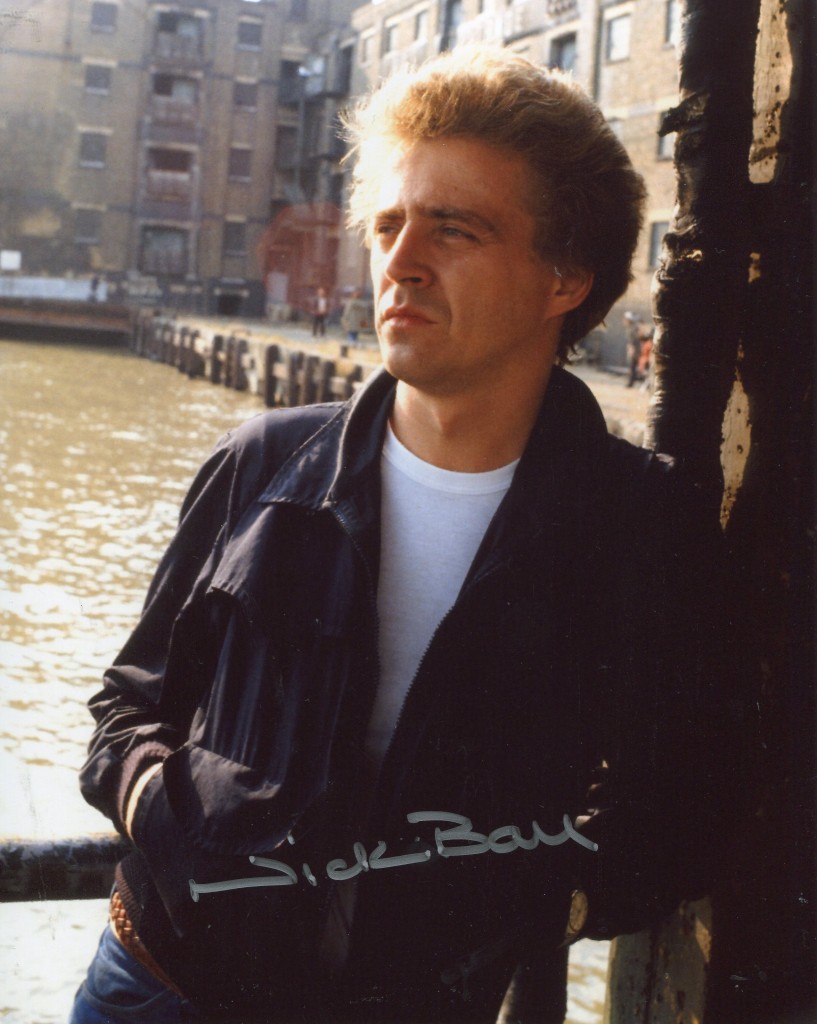
He portrayed the vicious gang lord Terry Bates in EastEnders between 2007 and 2009. He played Garry Ryan in series five of Footballers’ Wives and both series of its spin-off programme Footballers’ Wives: Extra Time. The voice of Nicholas Ball can be heard as well on various audio books offered via the internet; he has narrated books from such authors as Christopher Hitchens and James Maybrick. He was, in 2019, in an advert for Premier Inn, playing the part of Lenny Henry‘s manager.
- Liam
- No Comments
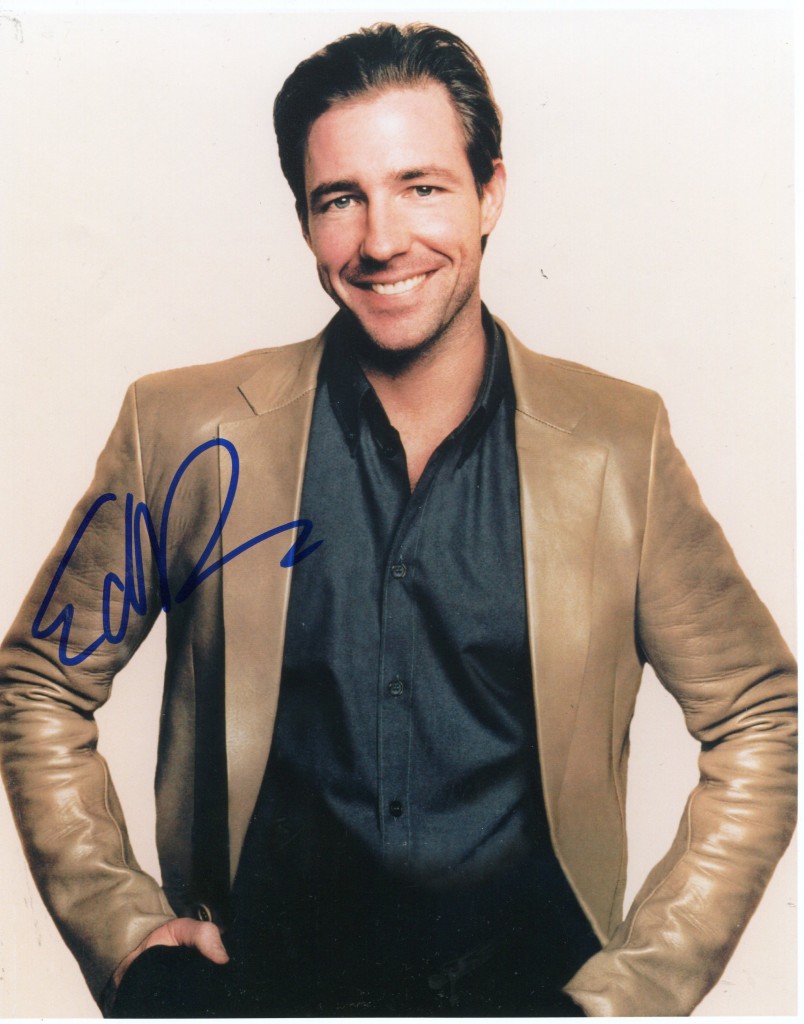
Edward Burns was born in 1968 in Queens, New York to an Irish-American family. He is best remembered for his role in “The Brothers McMullen” in 1998. Other films including “Saving Private Ryan” and “Looking For Kitty”. He is married to model Christy Turlington.
TCM overview:
Like Steven Soderbergh, Quentin Tarantino and Allison Anders, actor-writer-director Edward Burns rose to prominence during the indie film boom of the mid-1990s on the strength of his debut film, “The Brothers McMullen” (1995). A thoughtful, good-natured comedy-drama about three Irish-Catholic siblings, it won the Grand Jury Prize at Sundance and established Burns as a director on the rise. Unfortunately, some of his subsequent efforts, which included “She’s The One” (1996), “Sidewalks of New York” (2001) and “Nice Guy Johnny” (2010) felt like rehashes of “McMullen” in their wordiness and low-wattage conflicts. Burns also enjoyed an occasional side career as an actor, most notably in “Saving Private Ryan” (1998), but his tenacity and dedication to intimate dramas – for better or worse – were his calling cards for his decade-plus career.
Edward J. Burns Jr., born Jan. 28, 1968 in Woodside, Queens County, NY, was the son of police sergeant Edward J. Burns, Sr. and his wife Molly, a Federal Aviation Administration manager at Kennedy Airport in New York. Burns grew up with his older sister Mary and younger brother Brian in Valley Stream, Long Island; there, he enjoyed a typical Irish-Catholic upbringing, including time served as a alter boy. His parents, both dyed-in the-wool movie buffs, encouraged their children to pursue goals that would take them far beyond their neighborhood. Film eventually became his chosen medium, and after time at Oneonta College and State University of New York at Albany, he transferred to Hunter College, where he began making short films.
After graduation, Burns found work as a production assistant on a variety of television news programs, including “Entertainment Tonight” (syndicated, 1981- ), while writing and directing the 45-minute short “Brandy,” which made its way into the 1992 Independent Feature Film Market. The following year, he began work on a feature about his Irish-American roots in suburban New York. Shot on 16mm film at the home of Burns’ parents for less than $30,000 – some of which came from Burns’ father, who was credited as an executive producer – and utilizing a crew of fellow “Entertainment Tonight” staffers, “The Brothers McMullen” was a surprisingly heartfelt, funny picture about a trio of siblings who learn to contend with their collective past as their lives take a variety of turns in regards to love, fidelity, maturity and family. Burns himself led the cast of unknowns as brother Barry, who struggled with committing to Audrey.
“McMullen” was a major hit at the 1995 Sundance Film Festival, capturing its Grand Jury Prize and making Burns a rising star in the burgeoning world of independent features. Released theatrically by Fox Searchlight Pictures, it netted $10 million at the box office, which in turn yielded a green light for a second Burns film. The follow-up, 1996’s “She’s the One,” featured several cast and crew members from “McMullen,” including Bahns and co-star Mike McGlone, but the success of the first film allowed him a $3 million budget that afforded such name performers as Jennifer Aniston and Cameron Diaz, as well as an original song score by Tom Petty and the Heartbreakers. A romantic comedy about a pair of Irish-Catholic brothers (Burns and McGlone) who wrestle with heartbreak, broken marriages and new loves, “She’s the One” received mixed reviews, many of which cited its similarity to “McMullen,” and it did not perform as well with moviegoers.
Undaunted, Burns forged ahead with this third film, “No Looking Back” (1998), a lower budget romantic drama with Lauren Holly as a restless small-town waitress who escapes the doldrums of her life via an old flame, played by Burns. A major disappointment in the wake of “McMullen” and “She’s the One,” .
While Burns’ efforts as director occasionally struggled to find an appreciative audience, his turns as an actor caught the eye of Hollywood. His laconic, dry-witted delivery and model-grade good looks received a first-class introduction to mainstream audiences through Steven Spielberg’s World War II epic, “Saving Private Ryan” (1998), which cast him as Private Robert Reiben, one of only three members of Army Captain Tom Hanks’ team to survive a mission to save missing a GI called home by the government. However, subsequent efforts to mint him as a leading man, including the cop thriller “15 Minutes” (2001) with Robert De Niro, and “A Sound of Thunder” (2006), with Burns as a time-traveling scientist, were dismal failures, though he made for an appealing con man in the thriller “Confidence” (2003) with Dustin Hoffman. In later years, Burns seemed more comfortable in supporting roles, frequently as a boyfriend or fiancé whose disinterest spurs the female lead to seek romance elsewhere, as in “The Holiday” (2006) or “27 Dresses” (2008). Burns also enjoyed a brief stint as a boyfriend of Grace Adler (Debra Messing) in season three of “Will and Grace” (NBC, 1998-2006), and a season-long run as himself on “Entourage” (HBO, 2004- ) that centered on him penning a television series for the struggling Johnny Drama (Kevin Dillon).
Burns returned to the director’s chair in 2001 for “Sidewalks of New York,” a gentle comedy-drama about a group of romantically damaged Big Apple residents – again led by Burns, but also featuring Rosario Dawson, Dennis Farina, Stanley Tucci and Brittany Murphy – who try to overcome their fear of commitment. Shot in 17 days for less than $1 million, it received modest praise and turned a profit, which brought Burns back into the indie fold. It also served as the terminal point for his relationship with co-star Heather Graham, whom he had been dating since his breakup with Lauren Holly in 1998. The pair officially split in 2000, prior to the film’s release. That same year, he began dating model Christy Turlington, with whom he would endure a tumultuous relationship for several years. Initially engaged in 2001, they broke up shortly after the attacks on New York City on Sept. 11, 2001. They reunited and were married in 2003, the same year Turlington gave birth to their daughter, Grace. A son, Finn, followed in 2006.
Burns’ directorial career saw diminishing returns in the years that followed “Sidewalks of New York.” “Ash Wednesday” (2002), with Burns as a guilt-ridden Irish-Catholic and a woefully miscast Elijah Wood as his long-lost brother, opened in only two theaters and grossed less than $3,000. Its follow-up, “Looking for Kitty,” reunited Burns with some of his veteran players, including David Krumholtz and Connie Britton, in a comedy-drama about a basketball coach (Krumholtz) who hires a mouthy PI (Burns) to find his missing wife. It received more positive reviews, but again, only garnered a limited release. Burns tried his hand at television with “The Fighting Fitzgeralds” (NBC, 2001) a comedy about an Irish firefighter (Brian Dennehy) whose retirement is routinely interrupted by his family, but the series – co-produced by Burns’ brother Brian under their joint production company, Irish Twins – lasted less than a season.
Despite growing critical sentiment that Burns had squandered the goodwill generated by his debut, he was still able to raise the financing for film projects. In 2006, he saw the release of “The Groomsmen,” with Burns again drawing from life as a groom-to-be that is about to marry his longtime girlfriend (Brittany Murphy), who, like Turlington, is five months pregnant at the time of the ceremony. Though his supporting cast, which included Jay Mohr, John Leguizamo, Donal Logue and Matthew Lillard, received solid reviews, the film performed poorly during its theatrical run. The romantic drama “Purple Violets” (2007), with Selma Blair and Patrick Wilson, did not even make it to theaters; instead, the film earned the distinction for being the first feature to debut on iTunes. Burns also kept himself busy with a graphic novel, Dock Walloper, in 2007 and a series of noir-styled Internet shorts called “The Lynch Pin,” with Burns as a hired killer, in 2009. The following year saw him back on the festival trail with his latest film, “Nice Guy Eddie,” with Burns now playing the libertine uncle to Matt Bush’s title character, the sort of congenial good guy that Burns himself played a decade prior.
- Liam
- No Comments

Nora-Jane Noone was born in 1984 in Newcastle, Galway. She made her film debut in “The Magadelene Sisters” in 2002. She plays Garda kate Noonan in the ‘Jack Taylor’ triller series with Iain Glen. She played ‘Louise Hazel’in “Coronation Street”. She recently starred in the TV series “Deception”.
IMDB entry:
Nora-Jane Noone was born on March 8, 1984 in Galway, Ireland. She is an actress, known for The Descent (2005), The Magdalene Sisters (2002) and Savage (2009). Attended The Performing Arts school in Galway Attended college in NUI Galway, studying science. Born in Newcastle, Galway, Ireland. Previous acting role before “The Magdalene Sisters” was as Jan in a High school production of “Grease”Is a dancer and musician – can play the piano. She joined the cast of “Coronation Street”, playing a single mum of one and as a possible love interest for Steve McDonald. [February 2005]
- Liam
- No Comments
Robert Hays was born in 1947 in Maryland. He is best remembered for his role in “Airplane” in 1980.
TCM overview:
An earnest, boyishly handsome actor, Robert Hays has often adopted an amusing deadpan expression as well-meaning but clueless romantic leads caught up in farcical situations. A “Marine brat”, Hays grew up in Turkey, India and England before graduating from high school in Nebraska. Attending college in San Diego, he caught the theater bug after studying acting for a semester and promptly joined the Actor’s Guild at the Old Globe Theater. Hays stayed with the company for five years, performing in plays ranging from “Richard III” to “The Glass Menagerie” to “Say Who You Are”, winning the Globe’s Atlas award for the latter.
Hays made his TV debut guesting on ABC’s detective series “Harry O” and began appearing on TV-movies soon thereafter. A first series, “The Young Pioneers” (ABC, 1978), with Hays as the eponymous couple’s neighbor, fizzled after three episodes, but he had more luck with “Angie” (ABC, 1979-80). As clean-cut Brad Benson, Hays played a wealthy young doctor who dealt with sitcom adventures after marrying a poor waitress (Donna Pescow). The show was never a huge hit, but it got Hays noticed, and he made a successful debut in features with the hilarious disaster spoof, “Airplane!” (1980). As Ted Striker (a role he reprised for the 1982 sequel) he was quite funny as the goofy yet stalwart former pilot who must try to land an endangered plane.
Hays’ wide-eyed, middle-America good looks suggested promise in films, but the unpopular “Take This Job and Shove It” (1981), based on the hit song, failed to consolidate his fame. Subsequent features were minor farces all cut from the same cloth. In “Trenchcoat” (1982) and “Fifty/Fifty” (1991), he played bumbling spies, while “Honeymoon Academy” (1990) had him married to a spy caught up in work during their honeymoon. “Scandalous” (1984), meanwhile, put Hays in comic suspense once more as a reporter charged with murder. He later did direct-to-video releases like “No Dessert Dad, Till You Mow the Lawn” and “Raw Justice” (both 1994).
The likable Hays, a highly recognizable TV face, kept busy in the comic TV-movies “The Girl, the Gold Watch and Everything” (syndicated, 1980) and “Murder by the Book” (NBC, 1987). “Running Against Time” (USA, 1990) found a feckless, time-traveling Hays trying to prevent JFK’s assassination, and he also had his hands full with “Deadly Invasion: The Killer Bee Nightmare” (Fox, 1995). Often cast in roles calling for him to react as much as act, he proved a good choice for a TV version of “Mr. Roberts” (NBC, 1984) and did his charming professional best by such short-lived TV series as “Starman” (ABC, 1986-87), “FM” (NBC, 1989-90) and “Cutters” (CBS, 1993). Hays had a rare opportunity to display his underused dramatic ability as Victoria Principal’s abusive husband in “The Abduction” (Lifetime, 1996).
The above TCM overview can also be accessed online here.


- Liam
- No Comments

Sam Waterston was born in Cambridge,Massachusetts in 1940. . Among roles, he is noted for his Academy Award-nominated portrayal of Sydney Schanberg in 1984’s The Killing Fields, and his Golden Globe-nominated and Screen Actors Guild Award-winning portrayal of Jack McCoy on the NBC television series Law & Order. He has been nominated for multiple Golden Globe, Screen Actors Guild, BAFTA and Emmy awards, having starred in over eighty film and television productions during his forty-five-year career.[1] Allmovie has characterised Waterston as having “cultivated a loyal following with his quietly charismatic, unfailingly solid performances.”[2] In January 2010, he received a star on the Hollywood Walk of Fame.
TCM overview:
A lanky, quietly intense, classically-trained actor, Sam Waterston entered film in the mid-1960s, most typically cast as pensive dreamers and intelligent yet essentially ordinary middle-class types. He languished in several forgettable features while piling up impressive credits on the New York stage until he scored as Tom in a fine TV adaptation of Tennessee Williams’ “The Glass Menagerie” (ABC, 1973), opposite Katharine Hepburn. Waterston garnered further attention and acclaim, and made his most significant inroads into features up until that time, as Nick Carraway in the glossy but otherwise middling adaptation of F. Scott Fitzgerald’s “The Great Gatsby” (1974). A very persuasive and versatile performer with a slightly worried expression, the dark-haired Waterston has appeared in a series of Woody Allen films, beginning with “Interiors” (1978), including “Hannah and Her Sisters” (1986) and culminating with a moving performance as the rabbi with failing eyesight in “Crimes and Misdemeanors” (1989). Conveying a thoughtful, sometimes anguished integrity, he gained perhaps his greatest acclaim in features for his Oscar-nominated work as journalist Sidney Schanberg, exploring the plight of the poor of Cambodia in Roland Joffe’s “The Killing Fields” (1984). He also did well in the delicate period piece “The Man in the Moon” (1991) and proved a good choice for the average American father who happens to be married to a “Serial Mom” (1994) in John Waters’ typically outrageous farce. In 1995, Waterston made his feature producing debut with “The Journey of August King”, in which he also had a supporting role. Waterston’s next entry into producing brought him to the small screen, where he worked behind the scenes as well as co-starring in the Showtime original movie “A House Divided” (2000). Here Waterston played a plantation owner who rapes one of his slaves and fathers a child who would become, after his death, a landowner and the wealthiest African-American woman in Georgia. Other notable TV-movie work included his portrayal of real-life hero Dr. Karl Koster, a Danish man who helped save Jewish lives during the Nazi’s regime, in the ABC TV-movie “Miracle at Midnight” (1998, which reteamed him with frequent film co-star Mia Farrow). As Waterston’s television career excelled, his work in film was more infrequent, but later big-screen credits included a featured role in the Ismail Merchant drama “The Proprietor” in 1996, a turn as the President of the United States in the political thriller “Shadow Conspiracy” in 1997 and, for Merchant-Ivory, in “Le Divorce” 2003, playing father to a pair of American expatirate sisters in Paris. Stage work has kept Waterston perennially busy: he was a recurring presence with the New York Shakespeare Festival from 1963 until 1976 and won several acting awards for his Benedict in a 1972 production of “Much Ado About Nothing”. He has subsequently performed on and off-Broadway in plays ranging from the seriousness of “The Trial of the Catonsville Nine” (1971) to the comical “Lunch Hour” (1980-81) and the poignant “A Walk in the Woods” (1988). Conveying a gentle, relaxed yet determined and craggy intensity, Waterston, with the convenient added merit of having bushy eyebrows, also played Abraham Lincoln in a 1993 revival of “Abe Lincoln in Illinois”, recreating a role he had earlier played in the TV-movie, “Gore Vidal’s Lincoln” (NBC, 1988). TV has brought Waterston other rewarding roles, as in the absorbing miniseries “Oppenheimer” (PBS, 1982), in which he played the controversial physicist who helped develop the atomic bomb, and in TV-movies including “Friendly Fire” (ABC, 1979), “Finnegan Begin Again” (HBO, 1985) and “David’s Mother” (CBS, 1994). He received great career exposure (and earned a pair of Emmy nods) with his role as a single father coping with dramatic social change in the 1950s South in the critically well-received, but low-rated series, “I’ll Fly Away” (NBC, 1991-93). Waterston joined another intelligent dramatic series when he replaced Michael Moriarty as the resident assistant D.A. on NBC’s “Law & Order” in 1994. The actor brought an alluring intensity and dedicated aggressiveness to the role of Jack McCoy, a motorcycle riding, possibly alcoholic lawyer. Injecting new life into the long-running series, Waterston earned three Emmy nominations for his starring role, which he would continue to play for a decade. He also earned critical accolades for his sensitive portrayal of Dennis Shepard, the father of slain gay gay college student Matthew Shepard in the television movie “The Matthew Shephard Story” (2002). The movie chronicles how Matthew’s parents came to terms with his life and concluded that their response to the murder trial of their son’s killer could end the cycle of hate.
- Liam
- No Comments

Benita Humewas born in 1906 in London. She made her film debut in the U.K. in 1925 in “The Happy Ending”. By the mid 1930’s she was in Hollywood and made such movies as “Tarzan Escapes” and “Rainbow On the River”. She was married to the actors Ropnald Colman and George Sanders. She died in 1967.
IMDB entry:
Benita Hume was born on October 14, 1906 in London, England as Benita Humm. She was an actress, known for Tarzan Escapes (1936), The Private Life of Don Juan (1934) and Suzy (1936). She died on November 1, 1967 in Egerton, England. Her first Broadway play was Ivor Novello’s “Symphony in Two Flats” in 1930She started out as a pianist but pursued acting because she wanted “excitement”Portrayed Victoria Hall on NBC Radio’s “The Halls of Ivy” (1950-1952) with her husband Ronald Colman. Daughter, Juliet, born 1944 Trained at RADA; first stage appearance in 1924. With Ronald Colman was part owner of the San Ysidro resort in Santa Barbara, California. Brunette leading lady, on stage in London from the age of seventeen. On the other side of the Atlantic, she played a series of well-coiffed English ladies in RKO and MGM films of the 1930’s, but never quite made the grade as a star. She eventually quit acting for the role of a leading socialite, as wife first to Ronald Colman then George Sanders.
- Liam
- No Comments
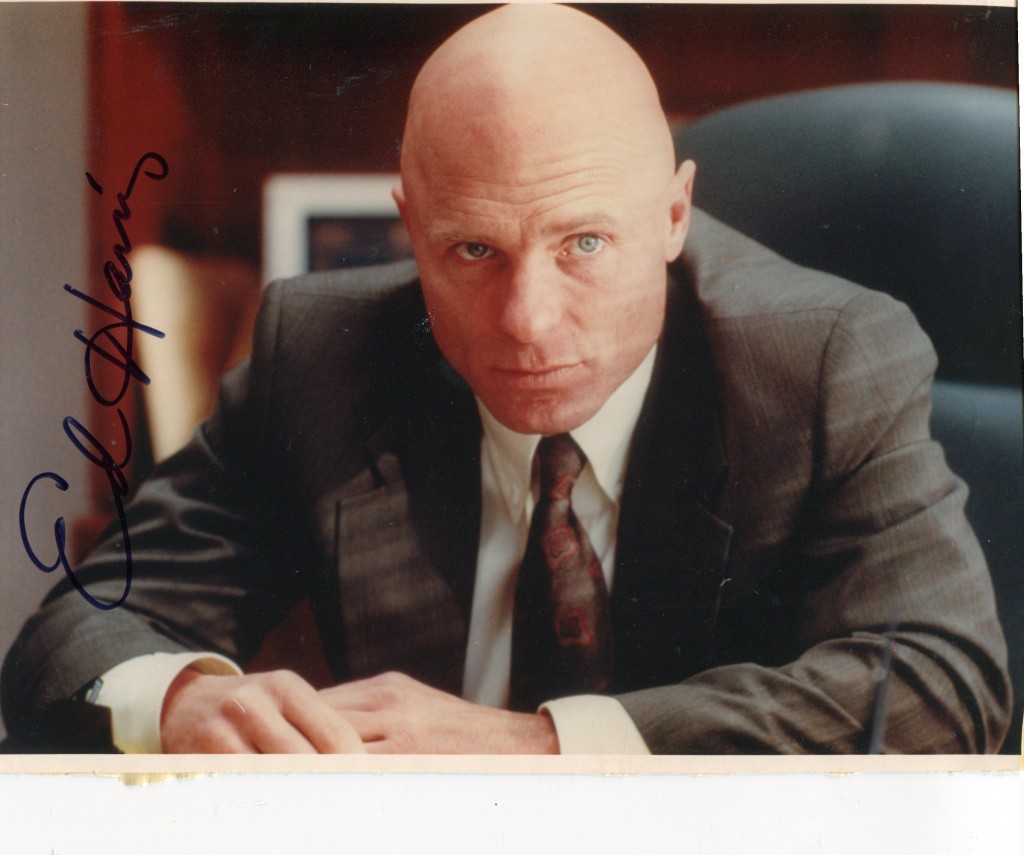
Ed Harris was born in 1950 in New Jersey. In 1983 he achiebed international recognition for his part in “The Right Stuff”. He went on to make such great movies as “Paris Trout”, “Places in the Heart”, “The Truman Show” and “The Firm”. He is married to actress Amy Madigan.
TCM overview:
Largely associated with stoic, hardened characters, actor Ed Harris went on to impress with a wide array of diverse performances in dozens of acclaimed films. Following a series of low-budget genre movies, Harris gained notoriety with his turn as legendary astronaut John Glenn in “The Right Stuff” (1983). Despite the accolades, it took several years before the actor landed another memorable role, which finally came when he was cast in James Cameron’s ambitious undersea adventure “The Abyss” (1989). Reaping the rewards of his new A-list status, Harris vacillated between literary character work in such acclaimed endeavors as “Glengarry Glenn Ross” (1992) and rousing crowd-pleasers like the NASA docudrama “Apollo 13” (1995). The versatile actor proved just as at home with pyrotechnic blockbusters like Michael Bay’s actioner “The Rock” (1996) as he was in more heady material, such as the Jim Carrey vehicle “The Truman Show” (1998). Harris later astounded audiences as both the director and star of the enthralling biopic “Pollock” (2000), which he followed with equally heralded supporting work in the dramas “A Beautiful Mind” (2001) and “The Hours” (2002). Incredibly dexterous, he played wildly divergent characters in the small town drama “Empire Falls” (HBO, 2005) and the shocking “A History of Violence” (2005). He returned to the director’s chair once more to helm the sweeping western “Appaloosa” (2008), cementing his reputation as a deft cinematic storyteller. One of the finest American actors of his generation, Harris’ artistic reputation and professional résumé knew few equals.
Born on Nov. 28, 1950 in Tenafly, NJ, Harris was raised by his father, Robert, a former singer-turned-bookseller, and his mother, Margaret, a travel agent. Growing up in a middle class Presbyterian home, Harris was captain of the Tenafly High School Tigers football team during his senior year. After graduating in 1969, he played football for Columbia University, but dropped out in 1971 to attend Oklahoma State University, where he made his professional debut as King Arthur in a Jewel Box Theater production of “Camelot.” Harris left OSU to major in theater at the California Institute of the Arts, where he finally earned his Bachelor of Fine Arts in 1975. From there, he quickly earned a reputation for his talent and intensity, namely in productions of “A Streetcar Named Desire” and “The Grapes of Wrath.” Meanwhile, Harris made his onscreen debut in the made-for-television miniseries, “The Amazing Howard Hughes” (CBS, 1977), then appeared in his first feature with a small part as a pathology resident in “Coma” (1978), a conspiracy thriller about strange happenings at a Boston hospital.
Following more supporting turns on “The Seekers” (syndicated, 1979) and “The Aliens Are Coming” (NBC, 1980), Harris had his first leading role in George Romero’s “Knightriders” (1980), playing the leader of a motorcycle gang who hits upon a get-rich-quick scheme of dressing like the Knights of the Round Table and performing at local renaissance fairs. Three years later, he emerged as a star with the one-two punch of the laconic cowboy with a troubled past and uncertain future in Sam Shepard’s off-Broadway hit “Fool for Love” and a stalwart turn as astronaut John Glenn in “The Right Stuff” (1983), Philip Kaufman’s epic drama about the dawn of the U.S. space program. Based on Tom Wolfe’s novel of the same name, “The Right Stuff” was lauded for its epic scope and sterling performances. While the expected accolades for his performance as Glenn failed to materialize, Harris nonetheless became an actor in demand. After a charismatic supporting role as Goldie Hawn’s soldier husband in “Swing Shift” (1984), Harris made a strong impression as a cheating spouse in “Place in the Heart” (1984). The latter marked the actor’s first screen pairing with Amy Madigan, whom he married before they headlined Louis Malle’s “Alamo Bay” (1985).
Also in 1985, Harris turned in a strong, believable performance as hard-drinking, good ole Southern boy Charlie Dick who woos and weds ascendant star Patsy Cline (Jessica Lange) in “Sweet Dreams.” The actor returned to his stage roots to make his Broadway debut opposite Judith Ivey as the stern, but loving father in George Furth’s autobiographical “Precious Sons” (1986), for which he earned critical praise and a Tony Award nomination. Back on the small screen, Harris played a conscience-ridden attorney who quits the profession after getting a string of guilty clients off the hook, only to be brought back by his mistress (Roxanne Hart) for one more case, this time involving a truly innocent man (Darrell Larson) accused of killing an undercover cop, in the HBO original movie, “The Last Innocent Man” (1987). Harris next starred in the little-seen “Walker” (1987), Alex Cox’s odd biopic of the 19th-century adventurer William Walker who declared himself president of Nicaragua, only to wind up a victim of his own hubris and overreaching ambition that resulted in widespread repression. The actor offered an intense portrait of a real-life soldier of fortune who bore more than a passing resemblance to Oliver North, who was then dominating the news.
In James Cameron’s big-budgeted underwater spectacle “The Abyss” (1989), Harris provided the anchor as the foreman of a civilian crew – which includes his estranged wife (Mary Elizabeth Mastrantonio) – tapped to rescue a U.S. nuclear submarine, only to discover the crash was caused by an extraterrestrial spacecraft containing an alien species. It was during this very difficult shoot, where the actors and crew were often submerged for hours underwater, that Harris famously declared he would never again work with Cameron, after the two butted heads more than once. In a return to the small screen, Harris starred in “Paris Trout” (Showtime, 1991), playing a lawyer hired to defend an unrepentant racist (Dennis Hopper) who finds himself drawn to his client’s wife (Barbara Hershey). In “Running Mates” (HBO, 1992), Harris was a bachelor presidential candidate who romances a widowed children’s author (Diane Keaton) who hates politics. Both projects allowed Harris to demonstrate a light, almost playful side that enhanced his standing as an unlikely comedic actor. Harris was firing on all cylinders in “Glengarry Glen Ross” (1992), the big screen adaptation of David Mamet’s incendiary play about a group of low-rent real estate agents. Harris played David Moss, a loudmouth who tells his down-and-out colleague (Alan Arkin) about his plan to steal the coveted Glengarry leads from their office, only to discover that an older, more desperate coworker (Jack Lemmon) beat him to it. Though the accolades went in large part to co-star Al Pacino for his fiery performance, Harris more than held his own in a cast that also included Kevin Spacey, Jonathan Pryce and Alec Baldwin.
After playing a frustrated FBI agent smoking out corruption in “The Firm” (1993), Harris was on the other side of the law as a creepy serial killer in “Just Cause” (1995). He then stood out in the ensemble of Ron Howard’s “Apollo 13” (1995), playing NASA mission control flight director Gene Krantz, a performance that earned him his first Oscar nomination. A turn as Watergate co-conspirator E. Howard Hunt in “Nixon” (1995) was followed by playing a military hero who precipitates a hostage crisis at Alcatraz in “The Rock” (1996). Following a performance as a homicide detective investigating a murder involving the president (Gene Hackman) in “Absolute Power” (1997), he received nearly unanimous praise and a second Best Supporting Actor Oscar nomination as the God-like creator-director of a popular 24-hour-a-day TV series in “The Truman Show” (1998). Harris again showed his softer side as a man caught between his ex-wife (Susan Sarandon) and his new girlfriend (Julia Roberts) in the comedy-drama “Stepmom” (1998), which he followed by playing a charismatic priest who investigates reported miracles on behalf of the church in the little-seen drama, “The Third Miracle” (1999).
In 2000, Harris realized a decade long dream, directing and starring in “Pollock,” an independently financed drama about abstract painter Jackson Pollock. Ever since his own father had sent him two biographies of the artist, the actor harbored a desire to portray Pollock on screen. The resulting motion picture, which premiered at the 2000 Venice Film Festival and was selected as the centerpiece of the 2000 New York Film Festival, earned positive critical reviews and Harris’ first Best Actor nod at the Academy Awards. Harris continued to add to his growing galaxy of film performances as the new millennium unfolded, portraying a German assassin sent to take out a Russian sharpshooter (Jude Law) in the WWII drama “Enemy of the Gates” (2001). After playing a high-ranking intelligence officer dealing with a schizophrenic mathematician (Russell Crowe) in “A Beautiful Mind” (2001), Harris co-starred opposite Meryl Streep in “The Hours” (2002) as an author dying of AIDS. In this film, Harris delivered another of his more riveting performances, as his character struggles with his disease, his relationships with the crucial women in his life and his reasons for continuing to stay alive. His captivating turn was rewarded with an Academy Award nomination for Best Supporting Actor – his third in that category and fourth nod overall.
The following year, he reunited with Nicole Kidman as her abusive ex-husband in a supporting role in “The Human Stain” (2003), then was seen as a southern football coach-turned-town hero in the feel-good hit “Radio” (2003), which starred Cuba Gooding, Jr. as a mentally challenged high school student who is allowed to help out with the team, but struggles to earn his welcome. Harris next appeared in the humorous, poignant HBO miniseries “Empire Falls” (HBO, 2005) as New England restaurateur Miles Roby, for whom the promising opportunities of youth have given way to the demands of family obligations, especially those concerning his cantankerous father (Paul Newman) and impressionable daughter (Danielle Panabaker). Unable to escape the town or the dominating shadow of his employer (Joanne Woodward), who owns the restaurant he runs, Miles copes with a recent divorce from his wife (Helen Hunt) while piecing together the shared events that shaped their lives. “Empire Falls” was nominated for a slew of Emmy Awards, including Harris for Outstanding Lead Actor in a Miniseries or Movie.
Harris delivered a standout supporting turn in director David Cronenberg’s masterful thriller, “A History of Violence” (2005). Harris played the menacing and acerbic Carl Fogarty, a shadowy, scarred figure who arrives in small town Indiana to confront a loving, rock-solid father and husband (Viggo Mortensen) whose brief notoriety after foiling a violent robbery attracts Fogarty’s attention and has him insisting he recognizes the man from a secret, bloody past 20 years earlier. Harris’ perfectly measured mix of threat and gallows humor was one of the highlights of a superbly tense film. After depicting Ludwig von Beethoven at the time he composed his famed “Ninth Symphony” in “Copying Beethoven” (2006), Harris was a descendant of Lincoln assassin, John Wilkes Booth, who implicates treasure hunter Ben Gates’ (Nicolas Cage) great-great grandfather after discovering missing pages from Booth’s diary in the adventure sequel “National Treasure: Book of Secrets” (2007). He returned to the director’s chair following an eight year absence to direct “Appaloosa” (2008), an old-school Western that showcased Harris as a U.S. marshal tasked to clean up a New Mexico territory city after a band of outlaws murdered the previous law enforcement.
As an actor Harris continued to deliver impressive work in a plethora of distinct and varied films. In the based-on-fact sports drama “Touching Home” (2010) he played a stern patriarch trying to reconnect with his adult sons, while in the WWII adventure “The Way Back” (2010), he played a cynical American attempting to escape from an isolated Siberian gulag. He then reteamed with his “Beautiful Mind” co-star Jennifer Connelly for a pair of ventures, starting with the religious satire “Salvation Boulevard” (2011) and followed by the psychological-drama “Virginia” (2012). Although the mainstream heist-thriller “Man on a Ledge” (2012) failed to set the box office on fire, Harris’ uncanny turn as 2008 Republican presidential candidate John McCain in “Game Change” (HBO, 2012) proved to be one of the more talked-about cable events of the year. Co-starring Julianne Moore as Sarah Palin, the telefilm was based on the political tell-all by John Heilemann and Mark Halperin and focused on the ultimately unsuccessful McCain-Palin ticket run for the White House. Harris’ exemplary performance was widely hailed by all and earned him a Golden Globe win and an Emmy nomination for Outstanding Supporting Actor in a Miniseries or a Movie.
- Liam
- No Comments
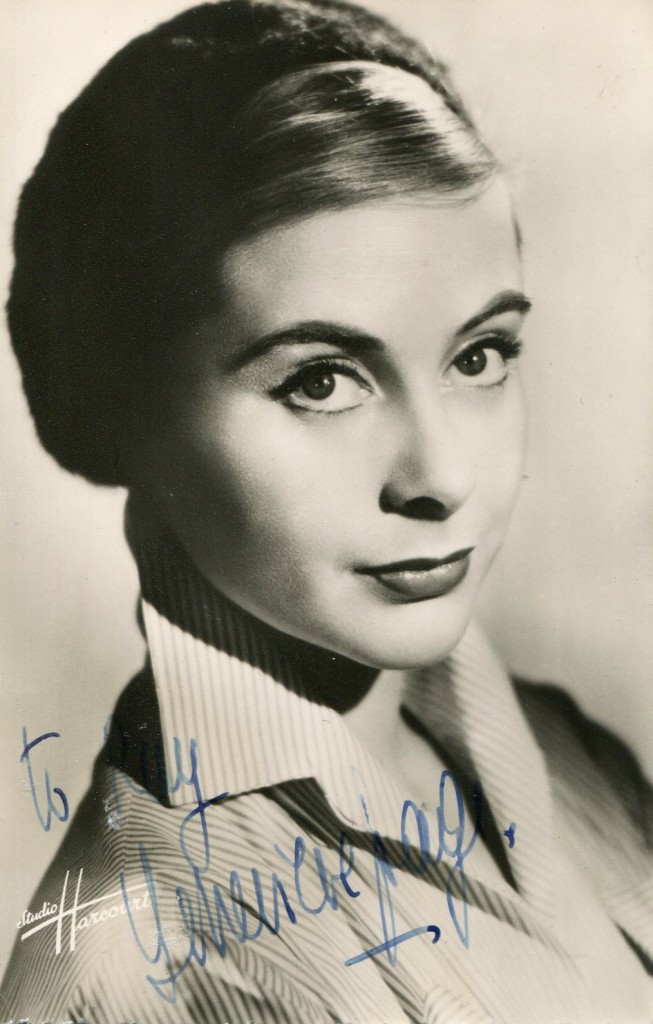
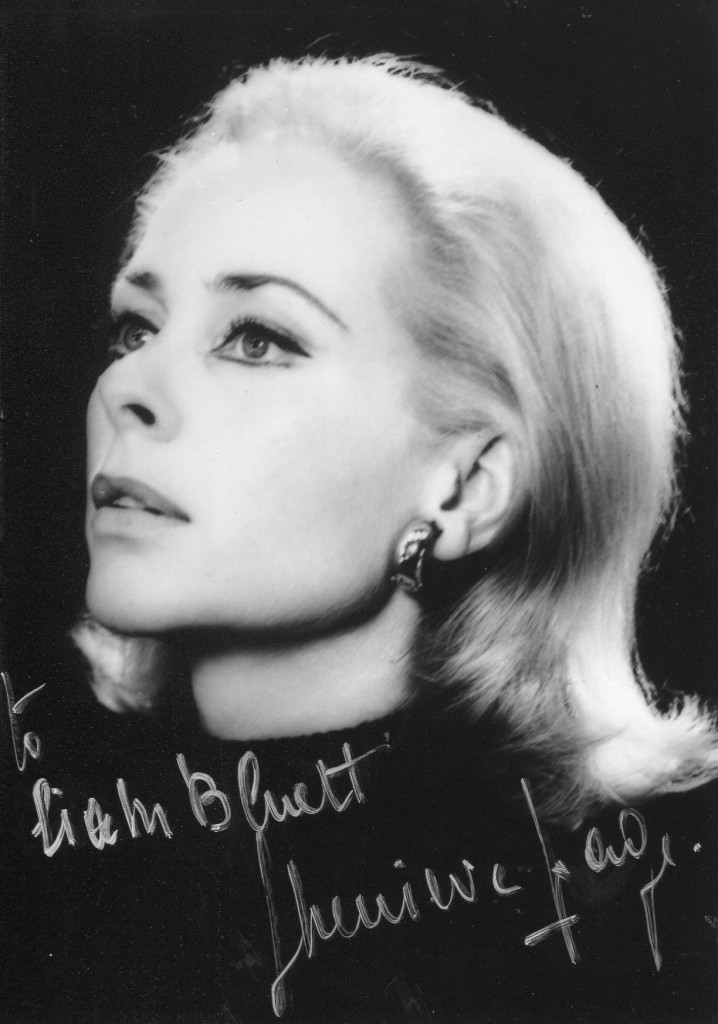
Genevieve Page was born in 1927 in Paris. She made her film debut in 1951 in “Fanfan la Tulipe” with Gerard Philipe. By the late 1950’s she was in Hollywood making such movies as “Song Without End” and “Youngblood Hawke”. She retired from acting in 2003.
IMDB entry:
Geneviève Page was born on December 13, 1927 in Paris, France as Genevieve Bronjean. She is an actress, known for Belle de Jour (1967), El Cid (1961) and The Private Life of Sherlock Holmes (1970). She has been married to Jean-Claude Bujard since 1959. They have two children. Member of the jury at the Cannes Film Festival in 1964 Had a long and distinguished career on stage and was nominated for the Molière Award (the French equivalent of the Tony Award) in 1996 for her role in “Colombe”. Winner of the 1980 “Prix de la meilleure comédienne du syndicat de la critique” for her role in “Les Larmes amères de Petra von Kant” at the Théâtre national de Chaillot in Paris. Starring in “Les Grandes Forêts” on stage at the Théâtre des Bouffes du Nord in Paris.
The above IMDB entry can also be accessed online here.
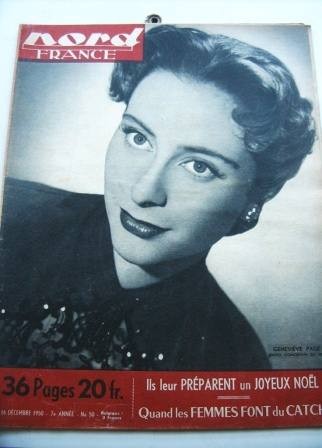
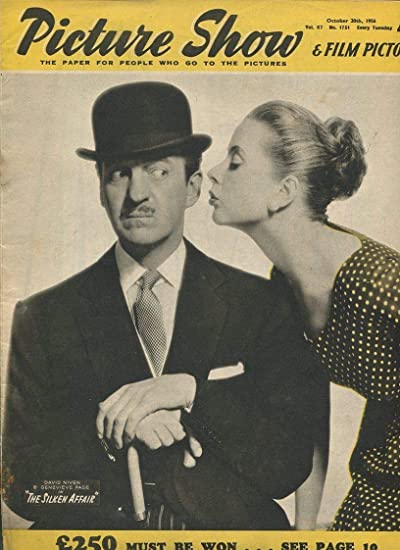
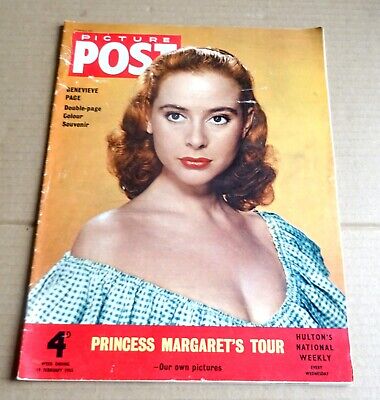
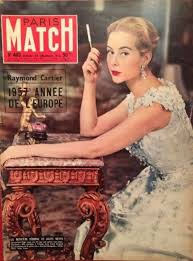
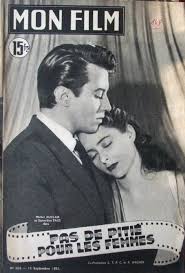
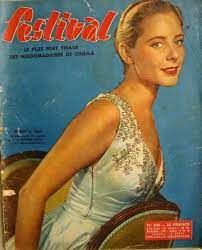
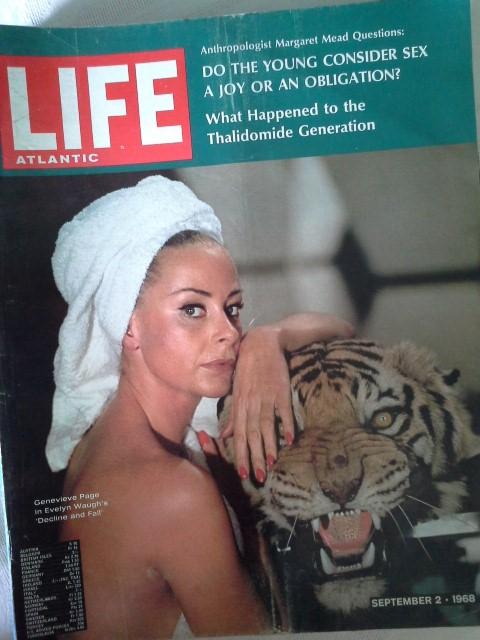
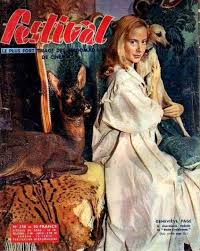
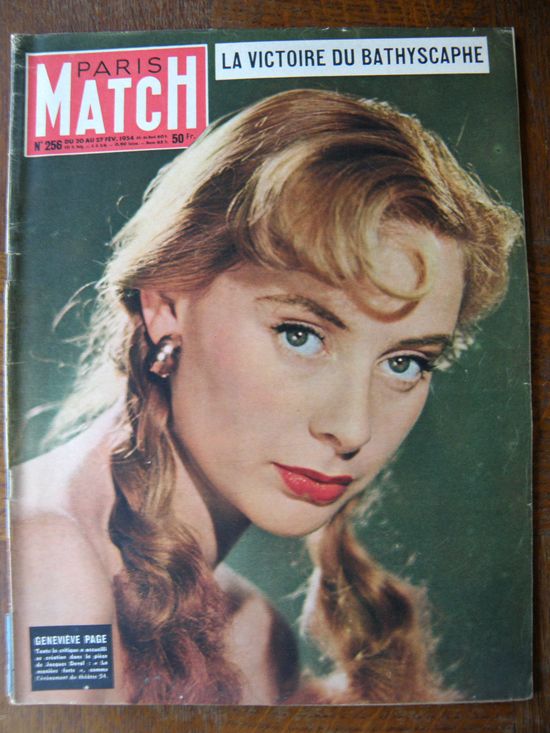
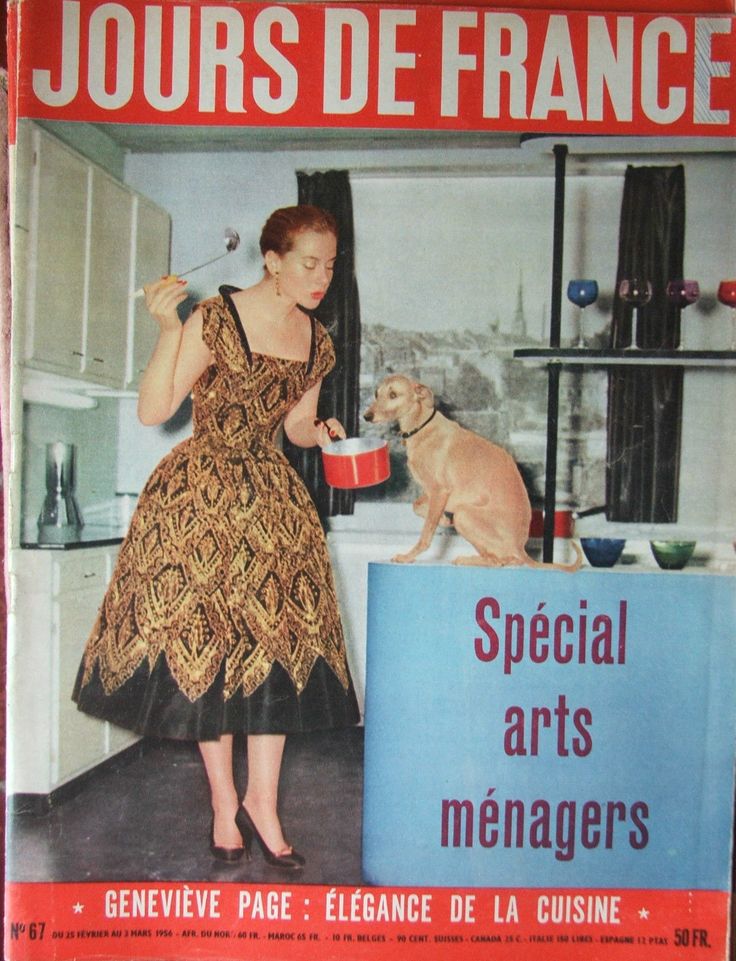
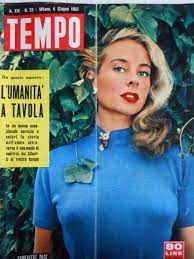
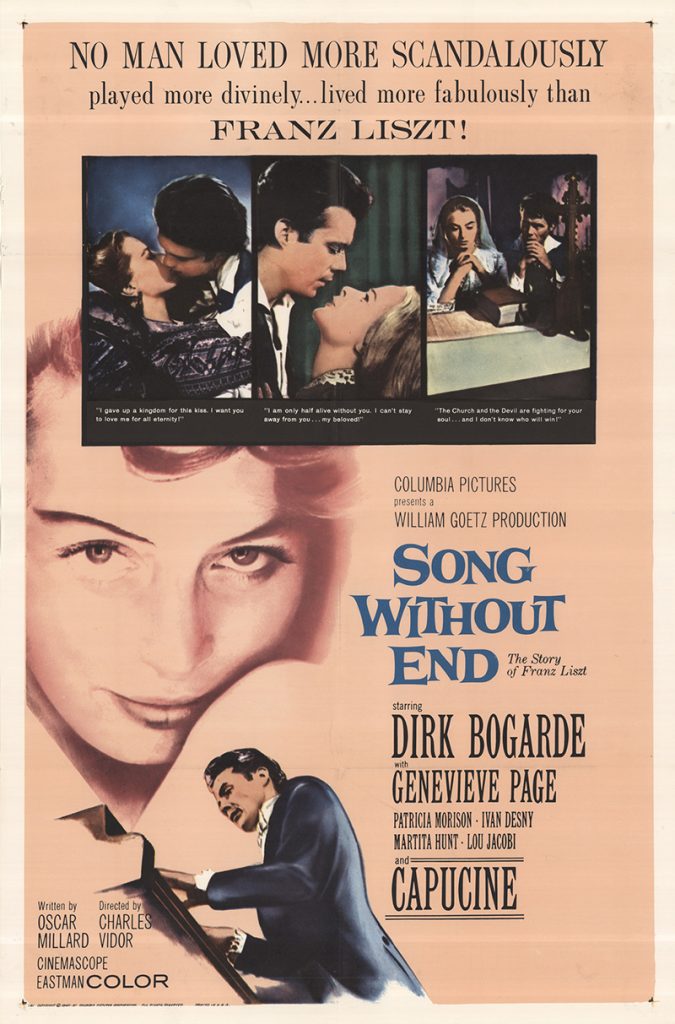
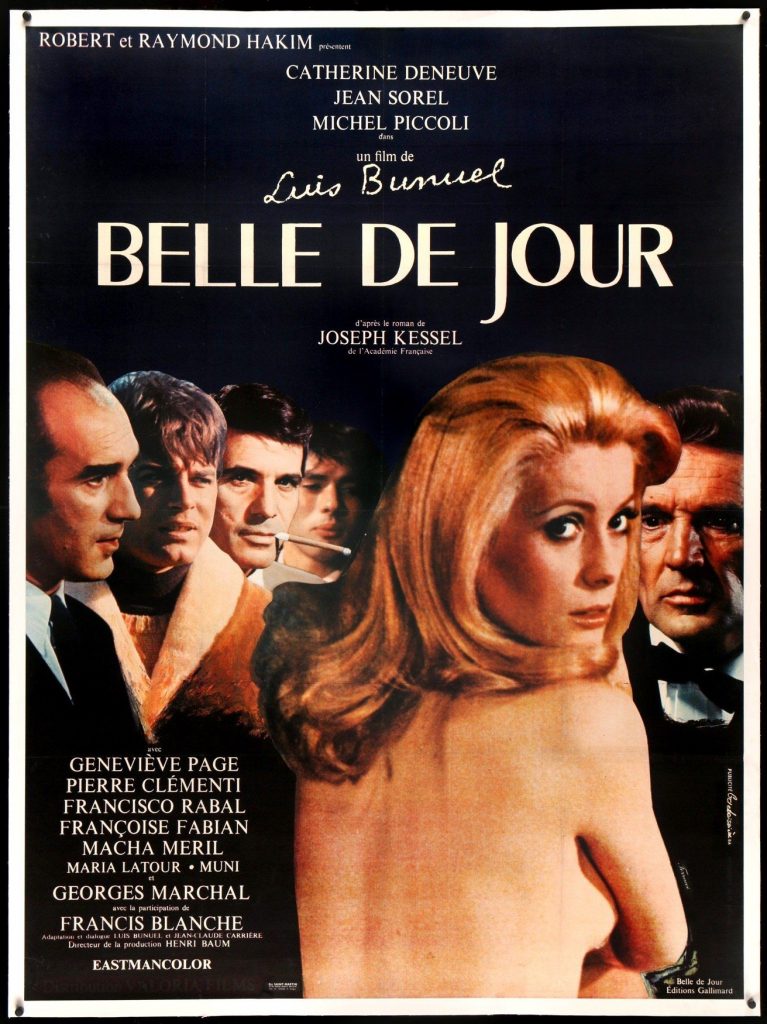
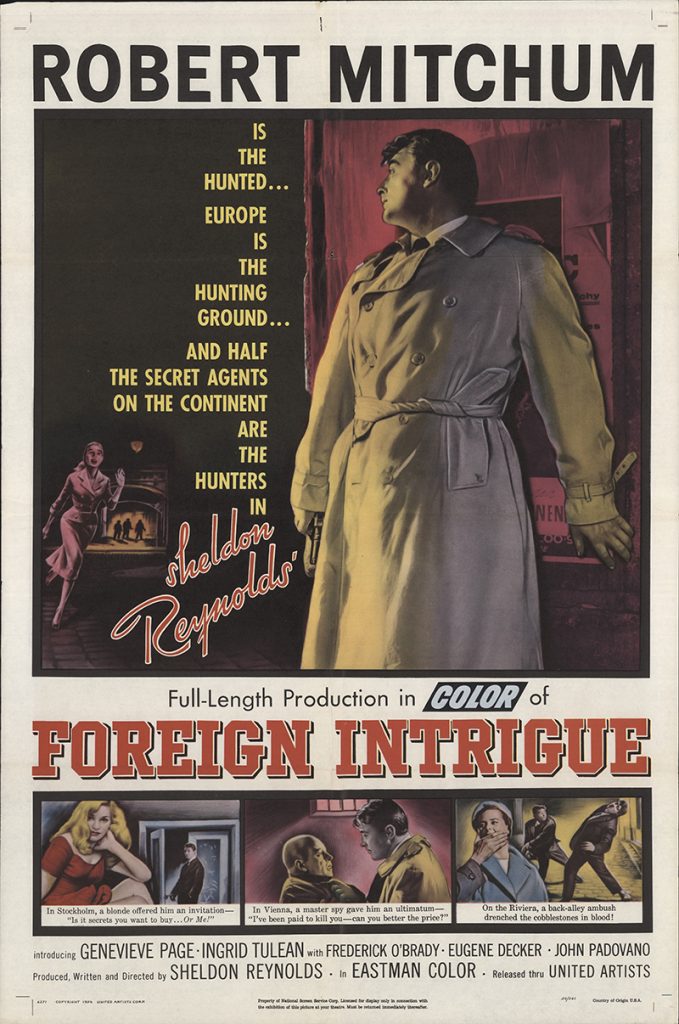
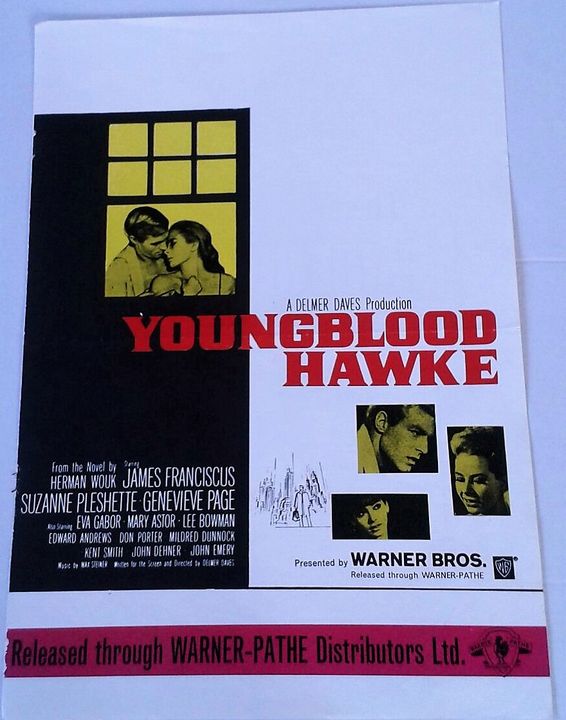
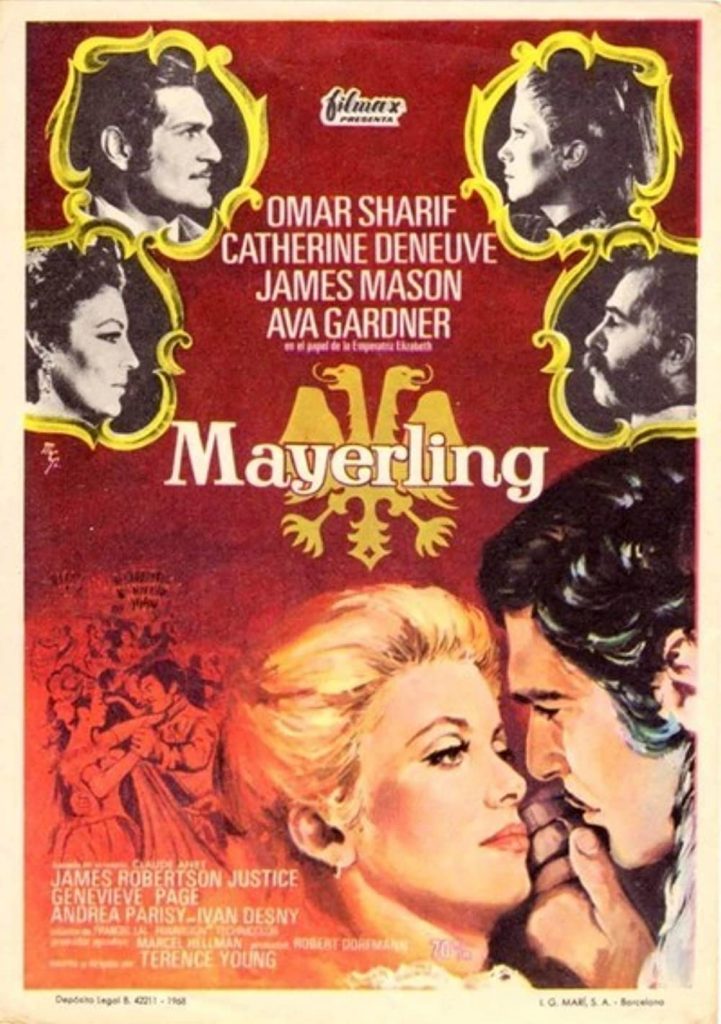
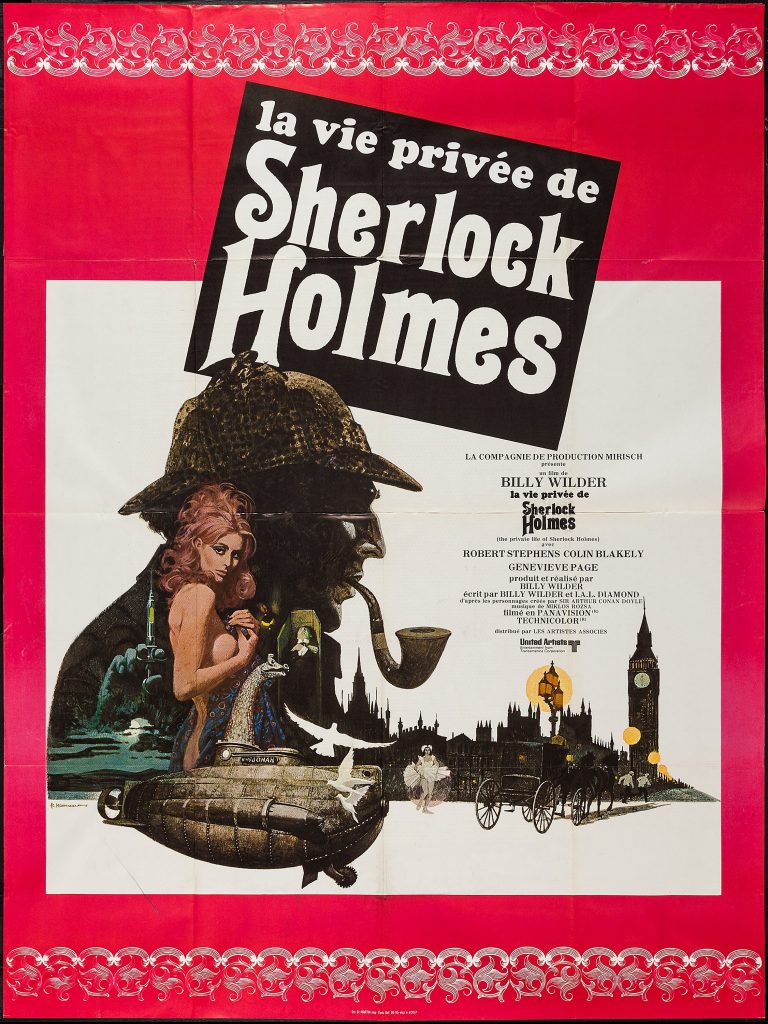
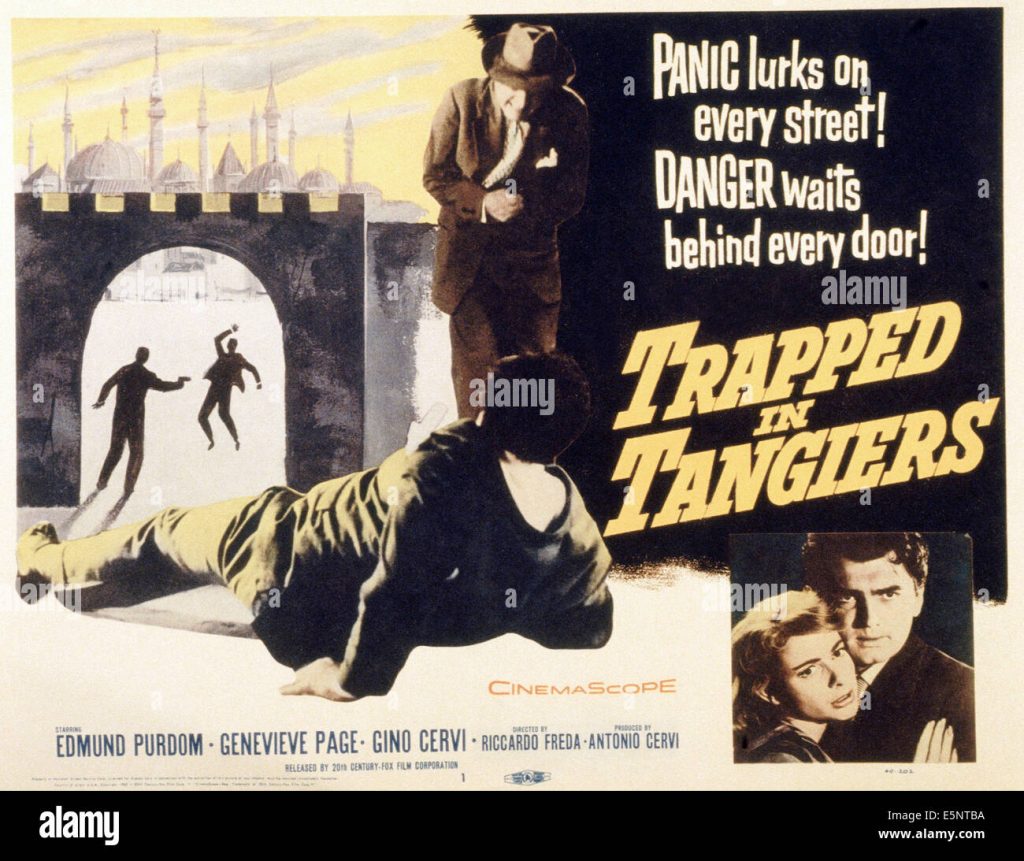
- Liam
- No Comments
Sites of Interest
These are some of my favourite film websites. They are a fantastic resource for any film buff.
